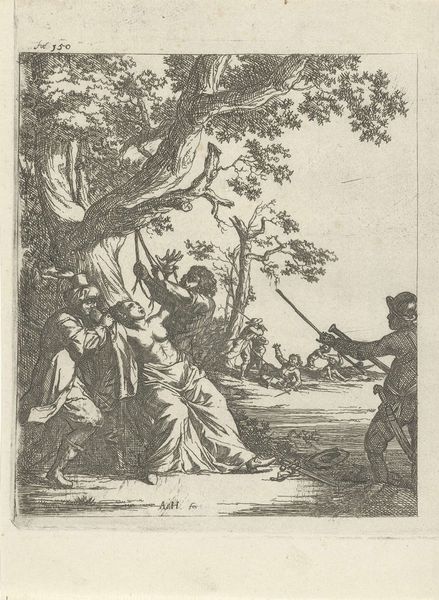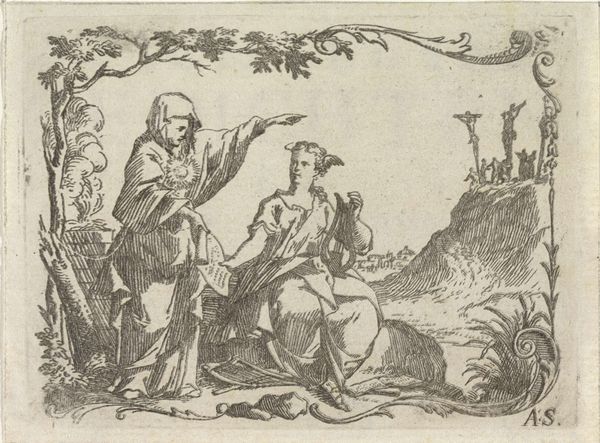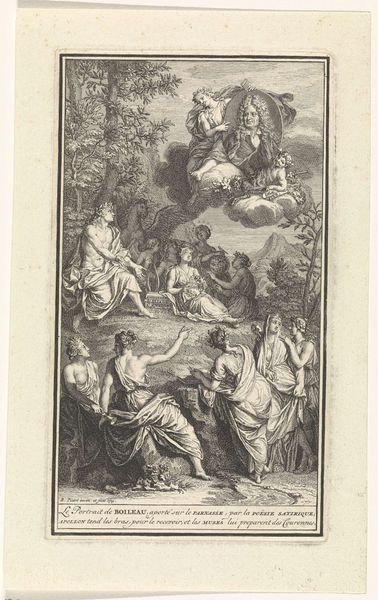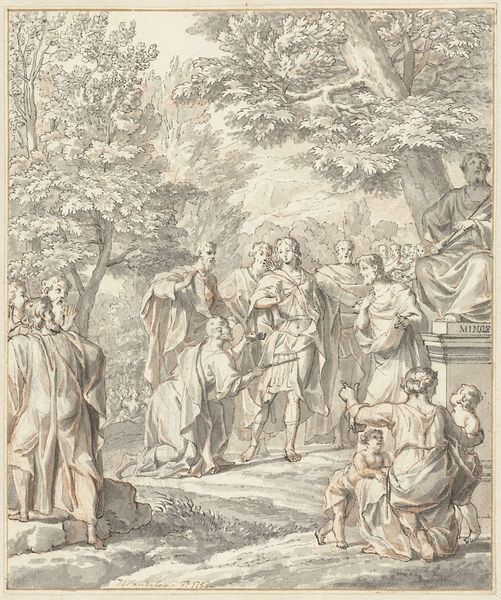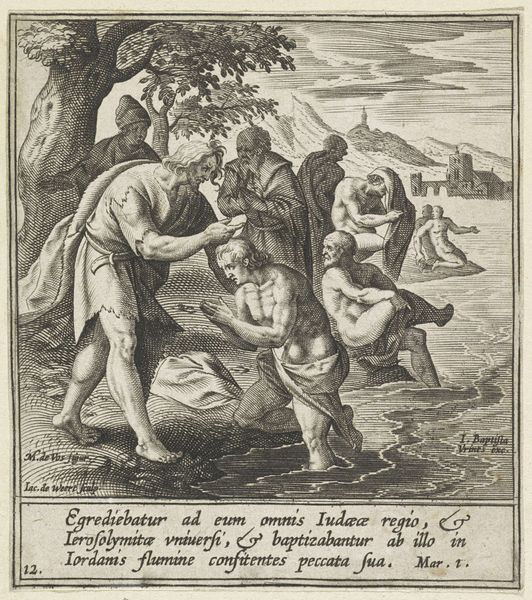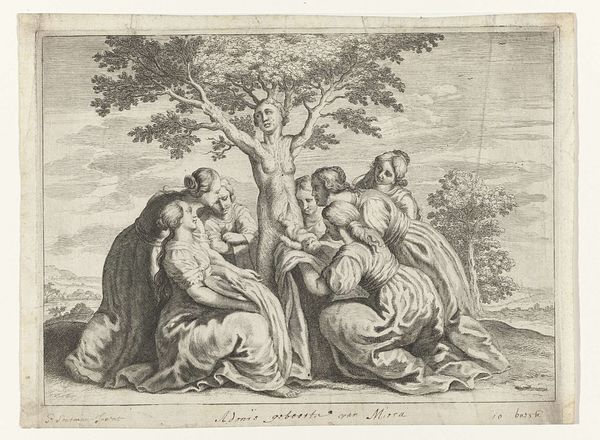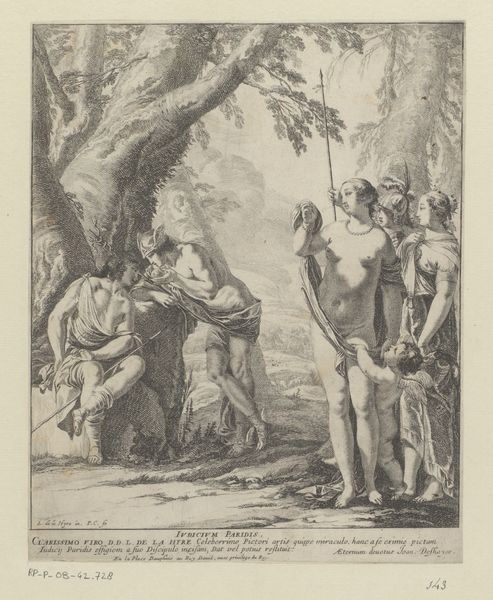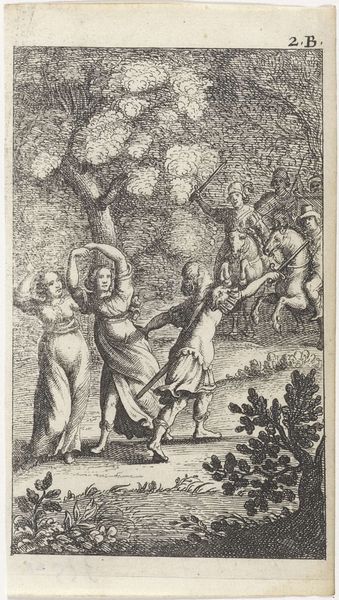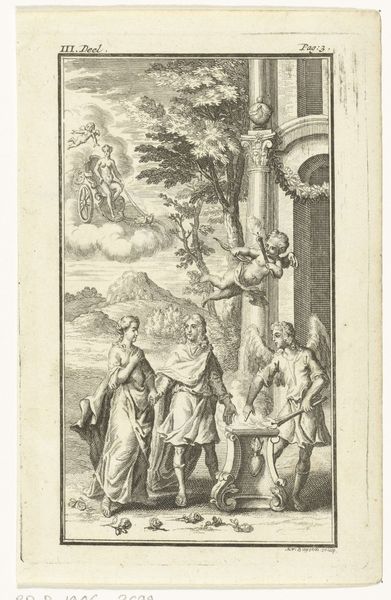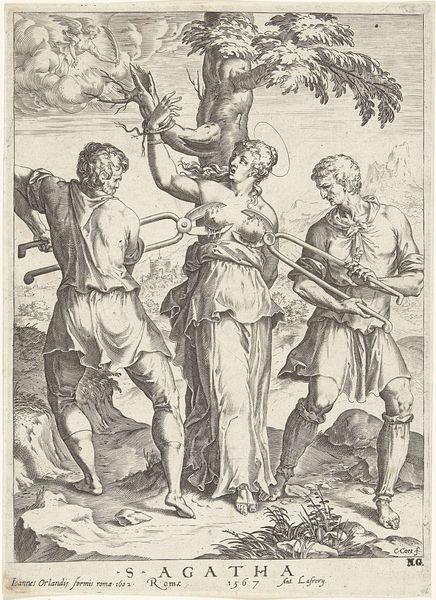
Mercurius beveelt de zorg van Bacchus aan de nimfen van Nysa 1658 - 1733
0:00
0:00
gerardhoet
Rijksmuseum
drawing, ink, engraving
#
drawing
#
allegory
#
baroque
#
pen drawing
#
landscape
#
figuration
#
ink
#
engraving
Dimensions: height 202 mm, width 145 mm
Copyright: Rijks Museum: Open Domain
Curator: So, here we have a piece attributed to Gerard Hoet, dating sometime between 1658 and 1733. It’s titled "Mercurius beveelt de zorg van Bacchus aan de nimfen van Nysa," an engraving using pen and ink. Editor: Whew, say that five times fast! My initial reaction is...pastoral snooze fest. It looks like everyone is tired except that little cherub, who looks like he’s ready to cause some divine mischief. All those flowing garments...and is that a satyr hiding in the shadows? Gives it a creepy vibe, don't you think? Curator: Perhaps “creepy” is strong, but it's definitely got layers! This image depicts a key moment in classical mythology – Mercury, entrusting the infant Bacchus to the nymphs. We need to think about gender roles here – these nymphs become Bacchus's caregivers, highlighting themes of protection, nature, and feminine influence on a future god of wine. Editor: Wine, eh? Suddenly that drowsy nymph makes sense! It looks like the Baroque era in all its glory, trying too hard to get serious about myths, a scene crammed in a small etching. Makes one thirsty for some untamed chaos and genuine passion, something a little less… staged. Curator: Baroque art frequently employed allegory to communicate complex ideas. Think about what's absent too. What socio-political narratives can we weave out of this apparent innocuous transfer? We are looking at how power is transferred through generations, nurtured perhaps but also influenced and ultimately conditioned to lead the same way or change course! Editor: Yeah, that makes me want to give them all some coffee and some protest signs. The power structures that lie beneath what at first sight look like innocent looking drawings might show our preconceived assumptions about how society ticks. I wish it felt more revolutionary; the landscape's just too... tame. Curator: It's about perspective, no? I mean, look at it: what do you see? We need to consider that maybe the peace is deliberate, to emphasize an idyllic moment before power structures solidify again. Editor: Fair enough. I suppose even pastoral scenes can be radical when you look closely. There's always more than meets the eye, and there might be an understated rebellion within. Curator: Exactly! The beauty of art is how it allows these intersectional readings between historical understanding and personal insight. Editor: I am so enlightened it is untrue! Let's move to the next drawing – something perhaps a bit more vibrant.
Comments
No comments
Be the first to comment and join the conversation on the ultimate creative platform.
